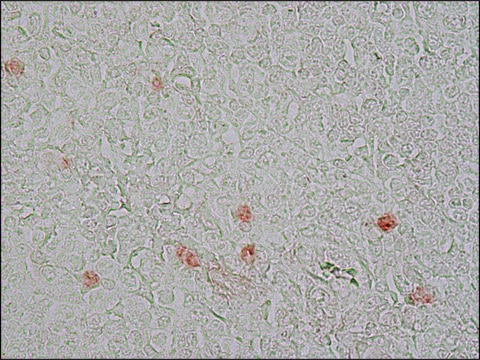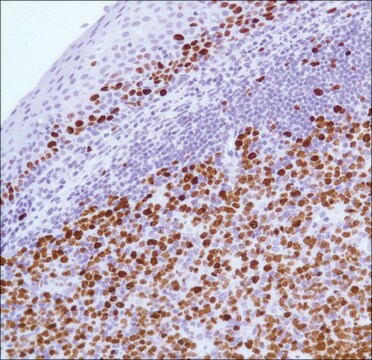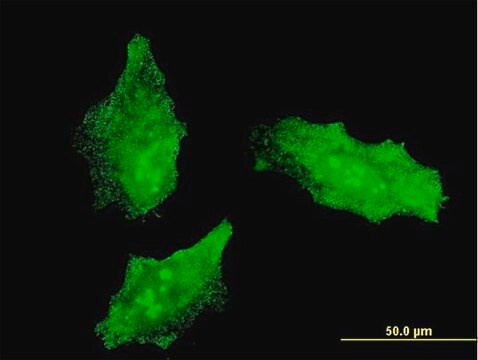MAB4190
Anti-Ki-67 Antibody, clone Ki-S5
clone Ki-S5, Chemicon®, from mouse
About This Item
Prodotti consigliati
Origine biologica
mouse
Livello qualitativo
Forma dell’anticorpo
purified immunoglobulin
Tipo di anticorpo
primary antibodies
Clone
Ki-S5, monoclonal
Reattività contro le specie
human
Confezionamento
antibody small pack of 25 μg
Produttore/marchio commerciale
Chemicon®
tecniche
flow cytometry: suitable
immunocytochemistry: suitable
immunohistochemistry (formalin-fixed, paraffin-embedded sections): suitable
western blot: suitable
Isotipo
IgG1
N° accesso NCBI
N° accesso UniProt
Condizioni di spedizione
ambient
Temperatura di conservazione
2-8°C
modifica post-traduzionali bersaglio
unmodified
Informazioni sul gene
human ... MKI67(4288)
Descrizione generale
Specificità
Immunogeno
Applicazioni
A 5-10 μg/mL concentration of a previous lot was used in IC.
Immunohistochemistry:
A 5-10 μg/mL concentration of a previous lot was used in IH.
Immunohistochemistry:
5-10 µg/mL on formalin fixed paraffin tissue. Citrate buffer-microwave antigen retrieval
Flow Cytometry:
A previous lot of this antibody was used in FC.
Western blot:
1-10 µg/mL
Optimal working dilutions must be determined by end user.
Epigenetics & Nuclear Function
Cell Cycle, DNA Replication & Repair
Qualità
Western Blot Analysis:
1:500 dilution of this antibody detected cell-cycle-associated protein of 345 kDa and 395 kDa on 10 μg of A431 lysates.
Descrizione del bersaglio
Stato fisico
Stoccaggio e stabilità
Risultati analitici
Tonsil tissue, A431 cell lysate
Altre note
Note legali
Esclusione di responsabilità
Not finding the right product?
Try our Motore di ricerca dei prodotti.
Raccomandato
Codice della classe di stoccaggio
10 - Combustible liquids
Classe di pericolosità dell'acqua (WGK)
WGK 2
Punto d’infiammabilità (°F)
Not applicable
Punto d’infiammabilità (°C)
Not applicable
Certificati d'analisi (COA)
Cerca il Certificati d'analisi (COA) digitando il numero di lotto/batch corrispondente. I numeri di lotto o di batch sono stampati sull'etichetta dei prodotti dopo la parola ‘Lotto’ o ‘Batch’.
Possiedi già questo prodotto?
I documenti relativi ai prodotti acquistati recentemente sono disponibili nell’Archivio dei documenti.
I clienti hanno visto anche
Il team dei nostri ricercatori vanta grande esperienza in tutte le aree della ricerca quali Life Science, scienza dei materiali, sintesi chimica, cromatografia, discipline analitiche, ecc..
Contatta l'Assistenza Tecnica.













